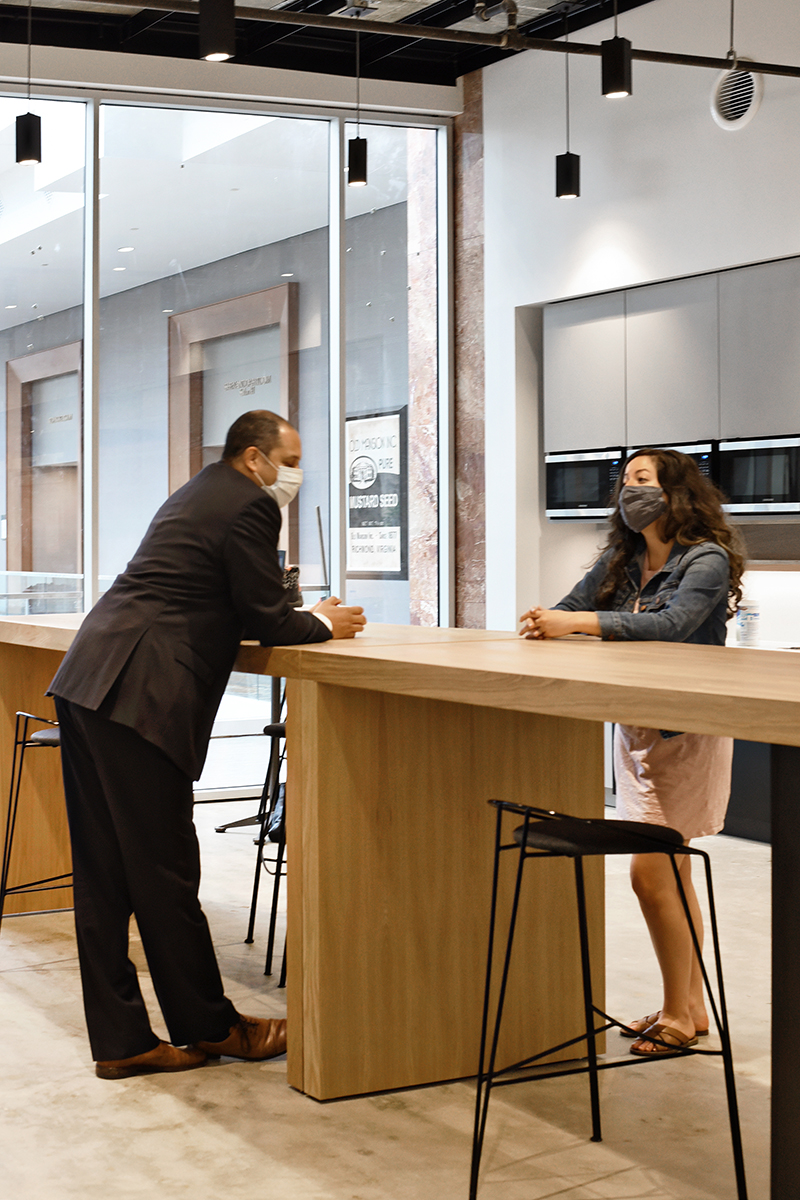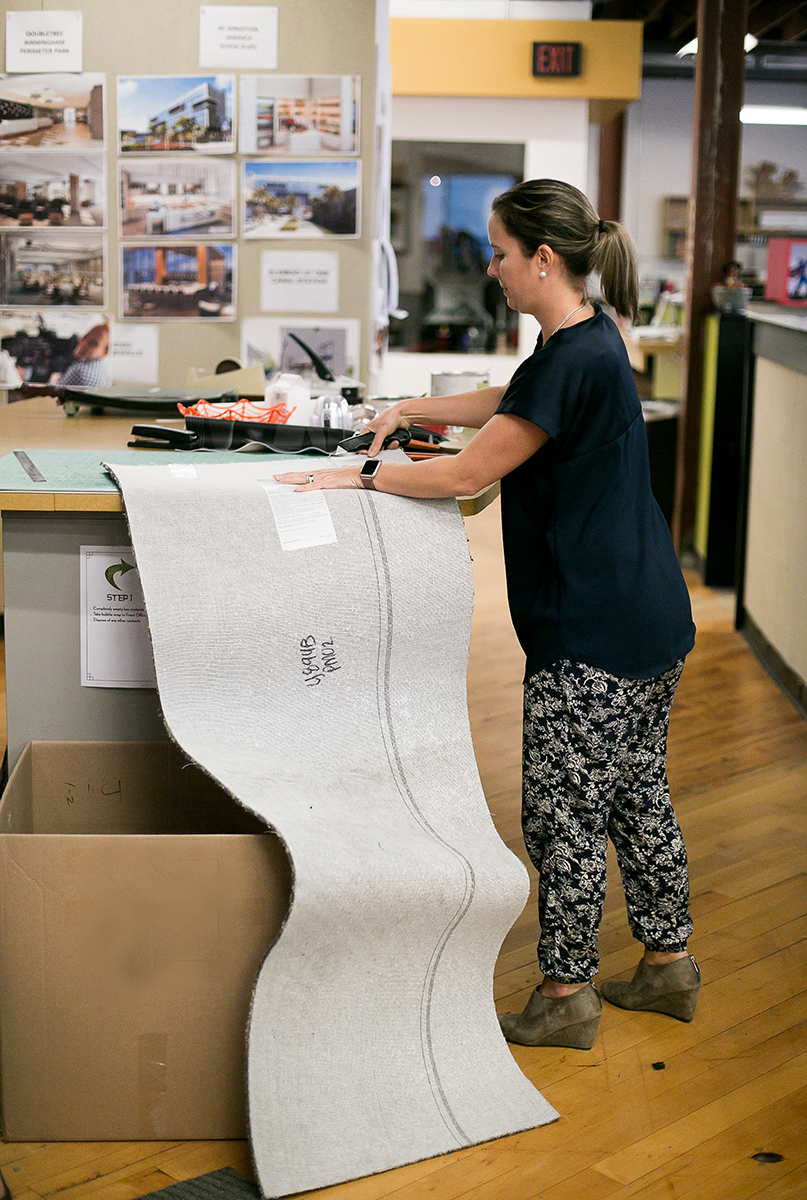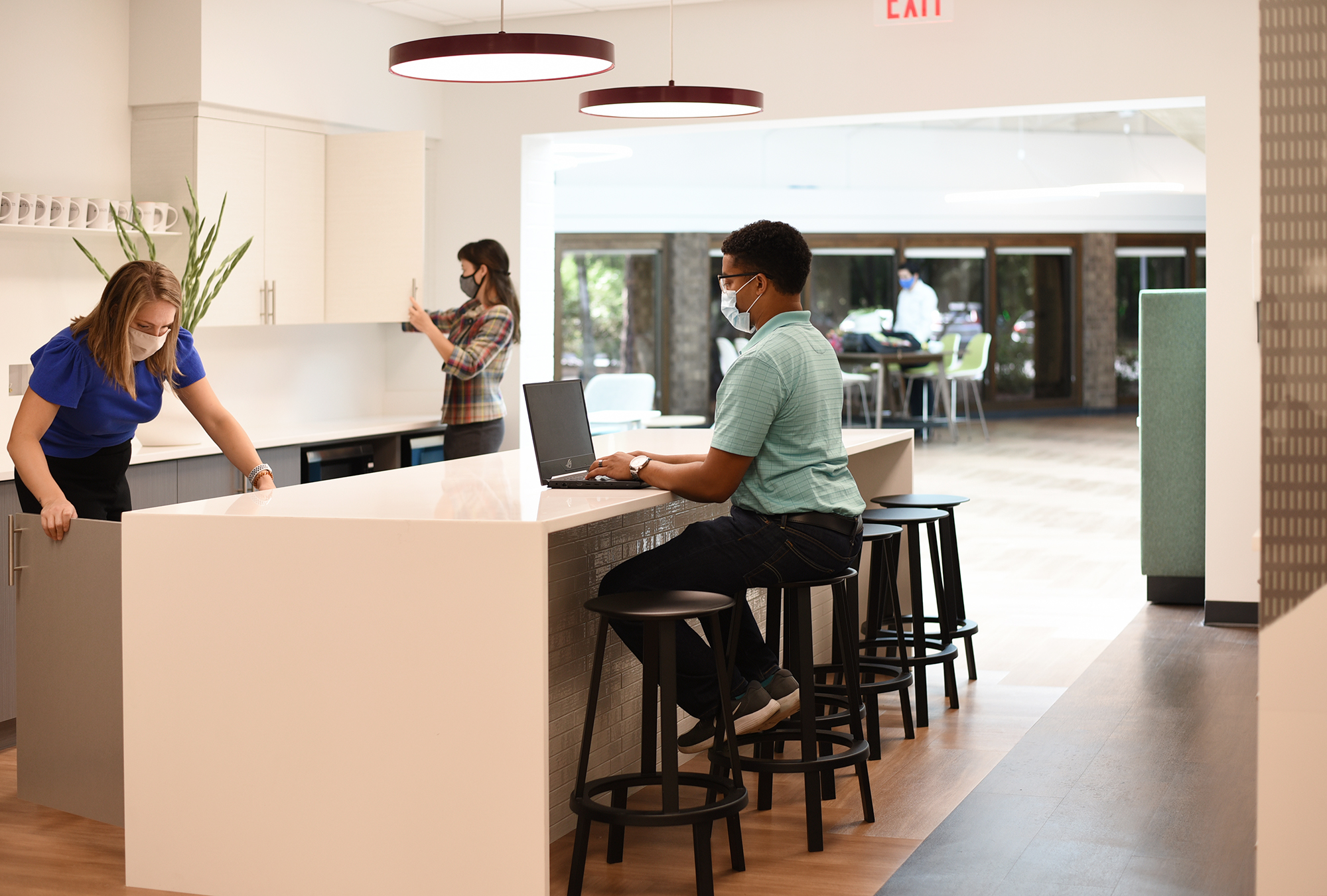The office, by almost all accounts, isn’t dead. (Don’t believe everything you hear.) But it will be different. The reimagined “where” of work combined with the evolving “how” of work means we’ll be navigating some entirely new dynamics in the coming weeks, months, and years.
The nature of these changes likely means employees will comprise of three distinct types: fully in-person, fully remote, and a hybrid of the two. So how should the office flex to support these different modes? And what relics of the pandemic-era—face masks, distance, sanitation stations—will remain after the virus is under control?

THE SEEN
There are certain physical elements of an office that are essential building blocks for any organization. The way they feel and function might change a bit. While square-feet-per-person has been decreasing over the last decade, the events of the last year have employers reconsidering.
So how can you efficiently use your existing space to support the
well-being of workers?
Shared Spaces
The hub of office life has always been where the food and drinks are. And while the items and offerings may remain the same, it’s time to reimagine those spaces that see high traffic at specific times of day. Consider how space planning in these areas can support distancing, continual disinfecting, and safe gathering.
Resources
One of the greatest draws of the office experience is access to resources. This may be as simple as a printer and copier or as specialized as a recording booth or 3D printer. What are the unique needs of your team?
Desk Space
In the hybrid work economy, not every worker expects—or needs—a personal desk. To flex for a fluctuating in-office population, reservable hotelling desks in designated team spaces allow teams to welcome remote or hybrid members as needed or to support project work and casual touchdowns. Adaptability is key!
Amenities
Consider what amenity spaces—think: wellness, fitness, relaxation and other areas—your team will benefit from now. What spaces will foster the engagement, creative exploration, and human connection your employees crave and deliver the return on space investment you need? Consider the trade-offs of what people need in the office vs. what they can achieve independently at home.

THE UNSEEN
There are certain physical elements of an office that are essential building blocks for any firm or organization. There are also those critical intangible pieces that keep your company running smoothly—policies, procedures, and company culture—that need equal attention to assure your firm continues to engage, inspire, and operate effectively. Changes to the way your employees physically inhabit (or don’t inhabit) your space must be supported by solid and practical policies, reinforced cultural norms, and robust technology.
Policy
Over 60% of our team, when asked, said they envision wanting to remain working remotely 2-3 days per week moving forward. Wider data from CBRE, Boston Consulting Group, and others share similar data. The office isn’t dead—it just needs to be more flexible. How your teams function now, and into the future, must be supported by clear expectations for when and how employees interact, engage, and otherwise behave in their teams. Providing boundaries and expectations not only creates consistency and shared responsibility, but provides employees and managers the freedom to develop schedules that meet the needs of its team members and project requirements.
Communication
If we’ve learned one thing from work in 2020, it’s that communication is key. Over-communicating suddenly became just…communicating. From daily or weekly check-ins to internal chat systems and soft phones, make sure it’s easy for your employees to be within reach both of each other and your external stakeholders. Consider increasing your communication channels to effectively capture the ways in which your diverse employee groups are working.
Culture
Even if you aren’t face-to-face on a regular basis, company culture is how you retain the top talent you’ve recruited. What does culture look like in a post-pandemic world? That’s entirely up to you. Make time for those personal connections, support systems, perks, and fun in new ways. Your space needs to be able to support these endeavors too, while creating [virtual] space for those engaging remotely.


Technology
Your IT infrastructure becomes even more important when managing team members across various locations. Make sure you have processes in place for when equipment or software breaks down in someone’s home. Have policies in place for what’s provided at home vs. in the office. Give your teams ample time to familiarize themselves with communication systems. Spend time staying up to date with new platforms and resources for long distance collaboration to enhance virtual collaboration.
The Office is Just Getting Started
Rethinking the office is a critical facet of how successful companies will move forward. Study after study indicates that employees miss the collaboration and connectivity they feel when they’re working alongside their colleagues. Supporting those shared experiences is where companies need to spend their energies: how can you adapt your footprint to make (literal) space for the evolving ways your employees will be working together? How can dedicated team spaces solve for hybrid employees with diverse needs when in the office?
We’re designing the next iteration of how space will look, feel, and behave. Let’s talk.


